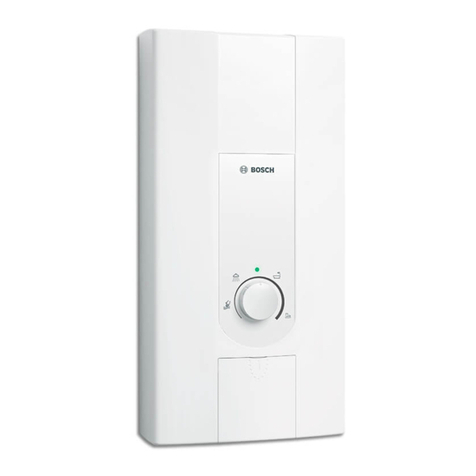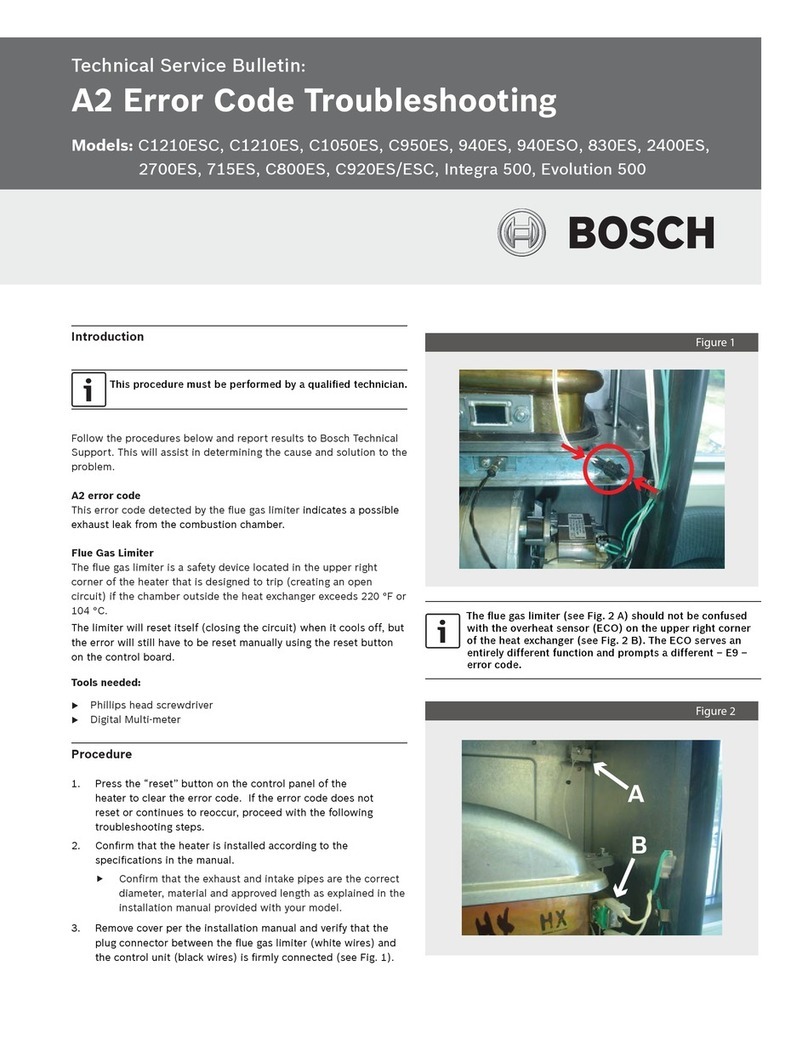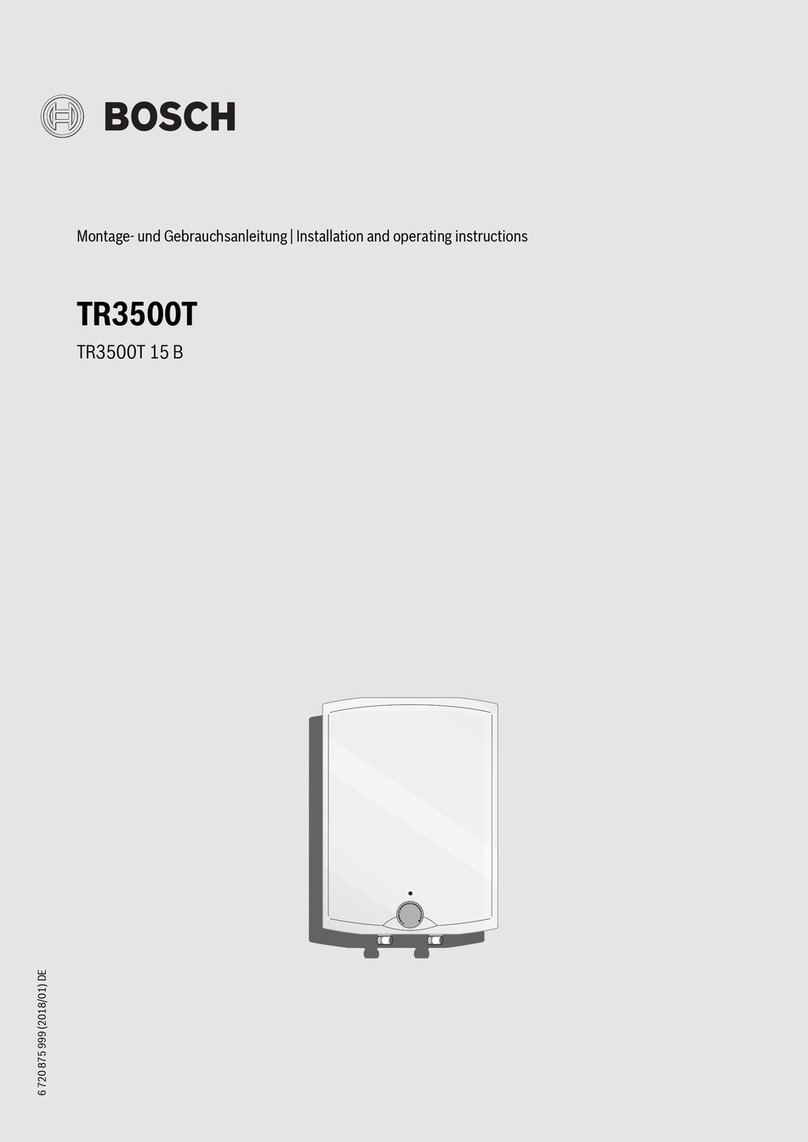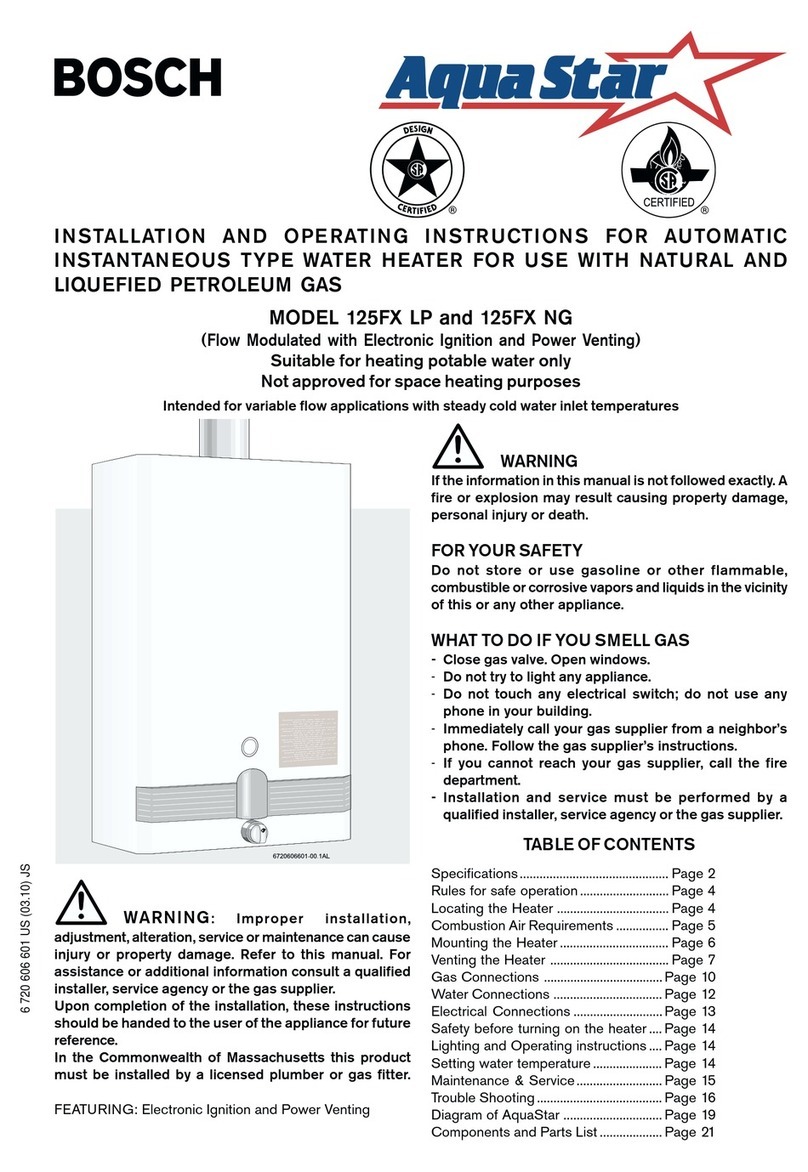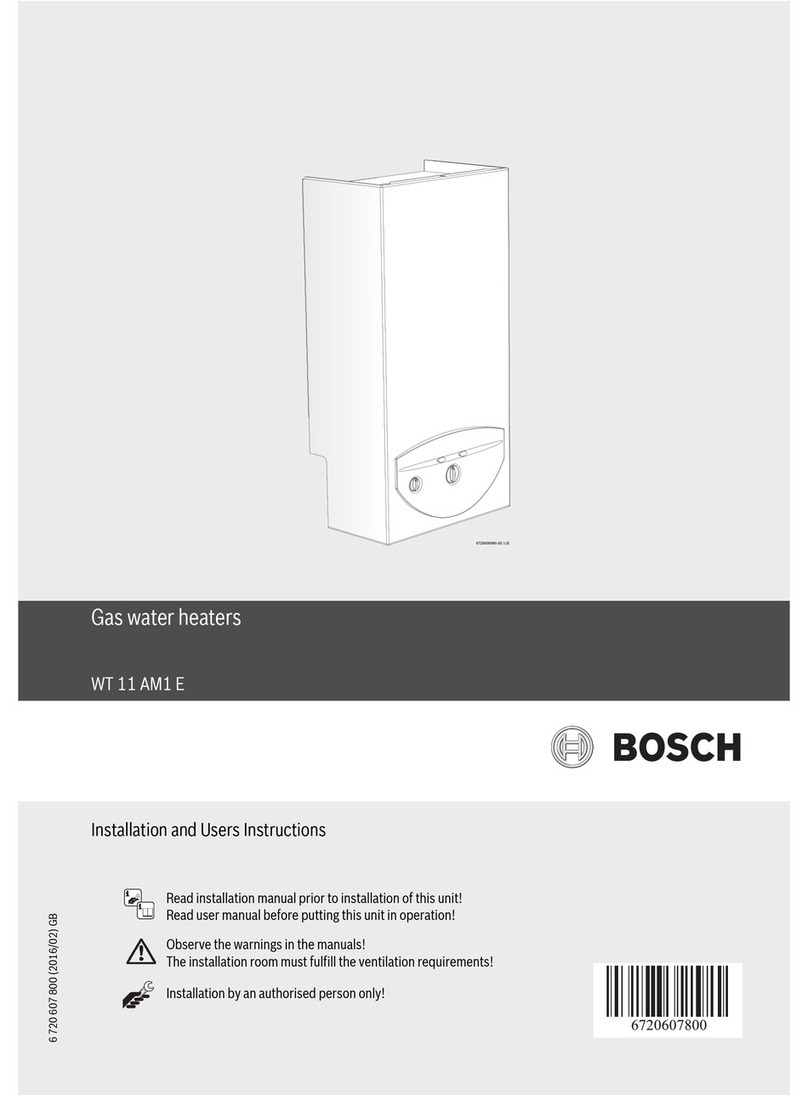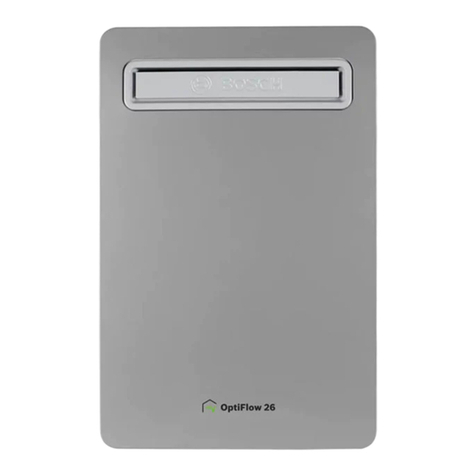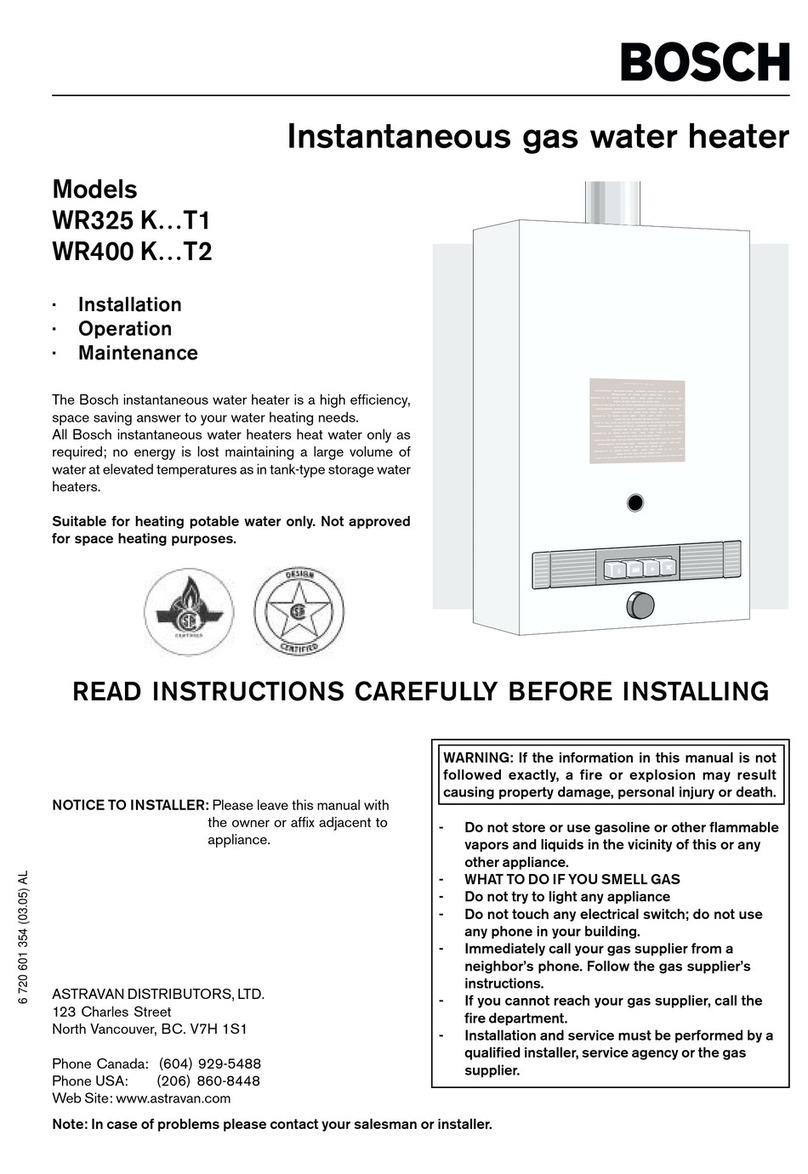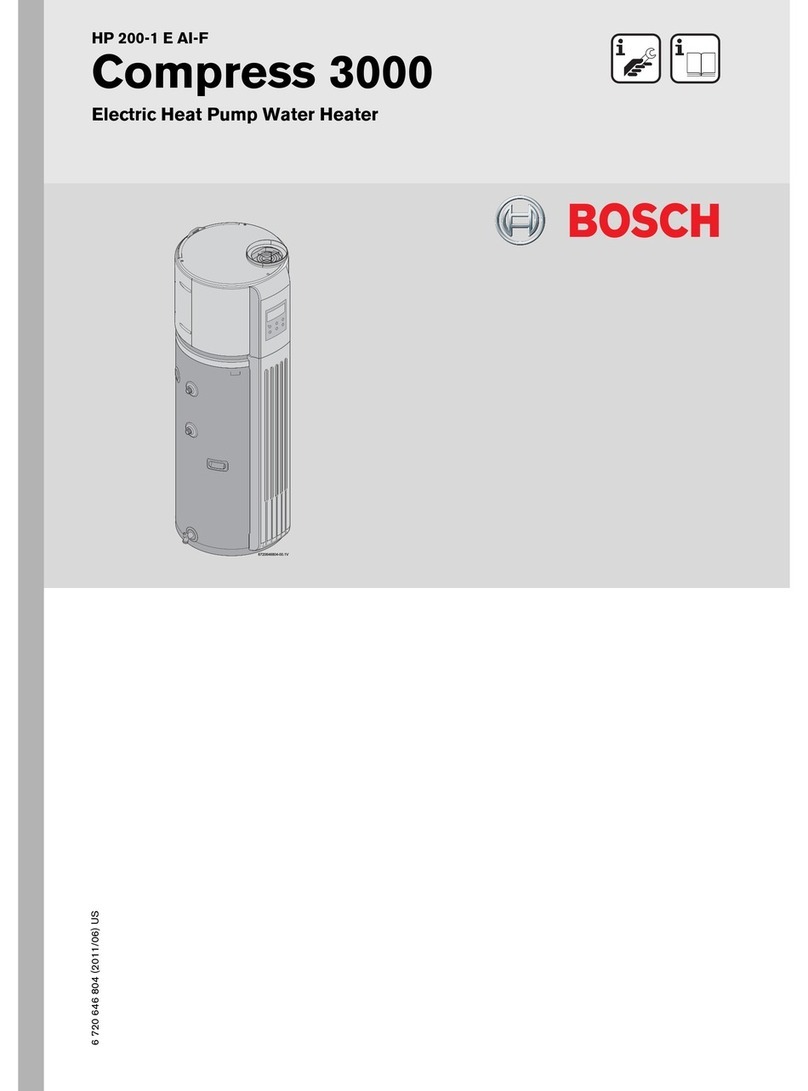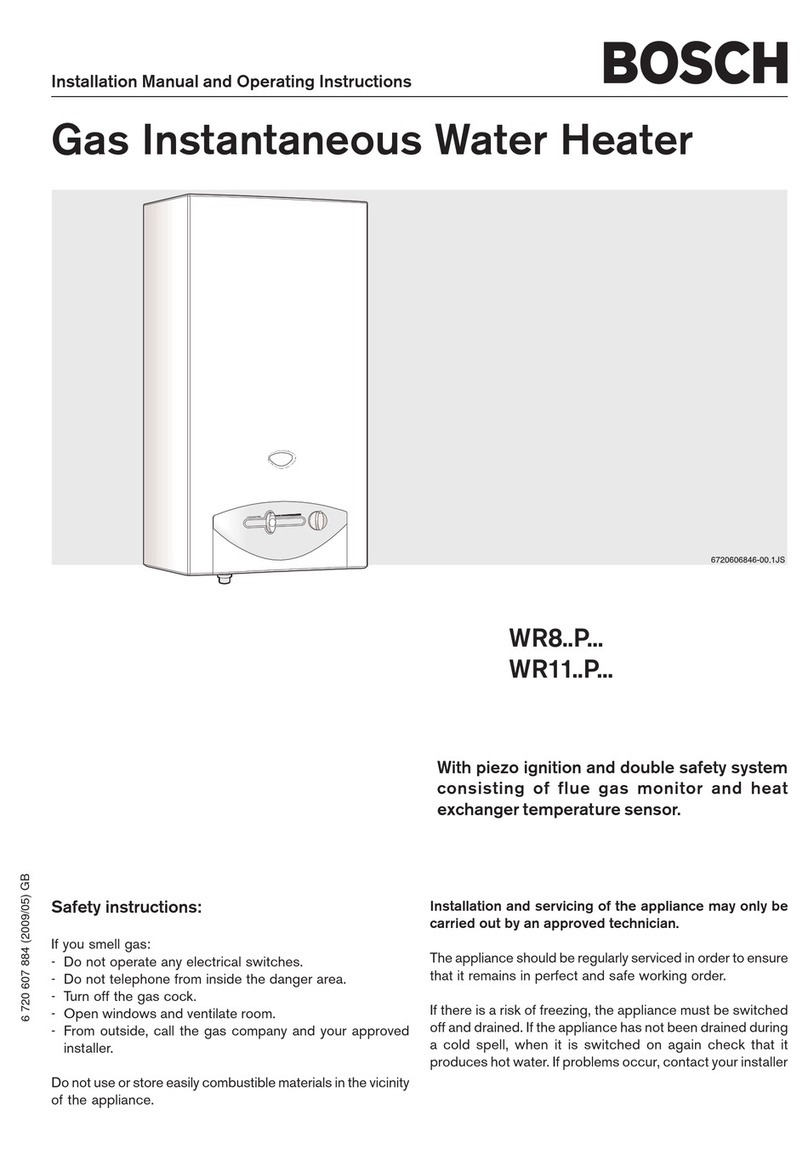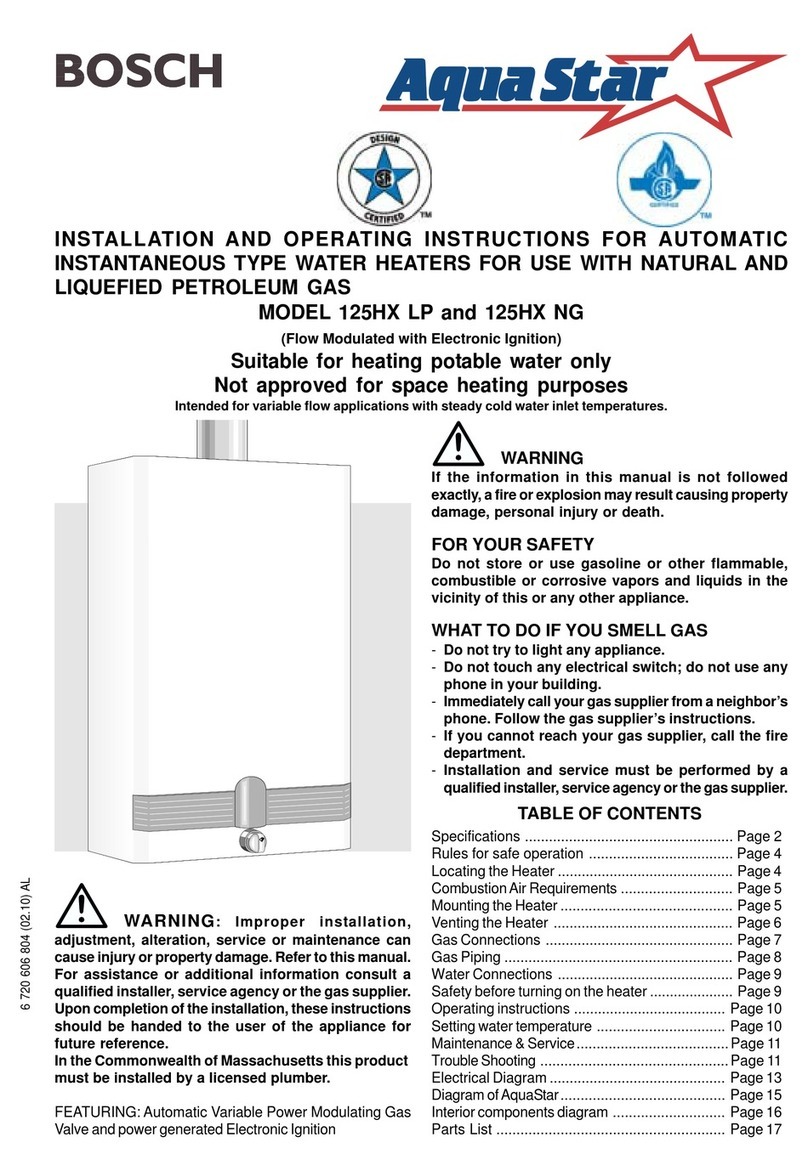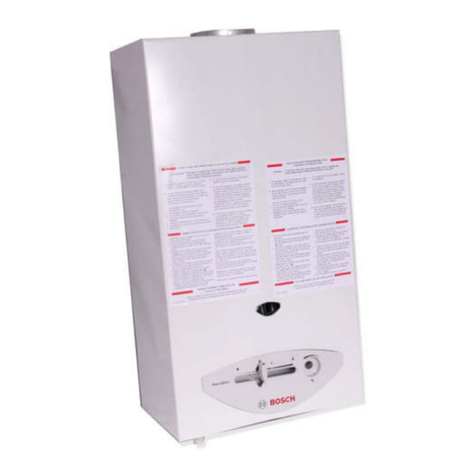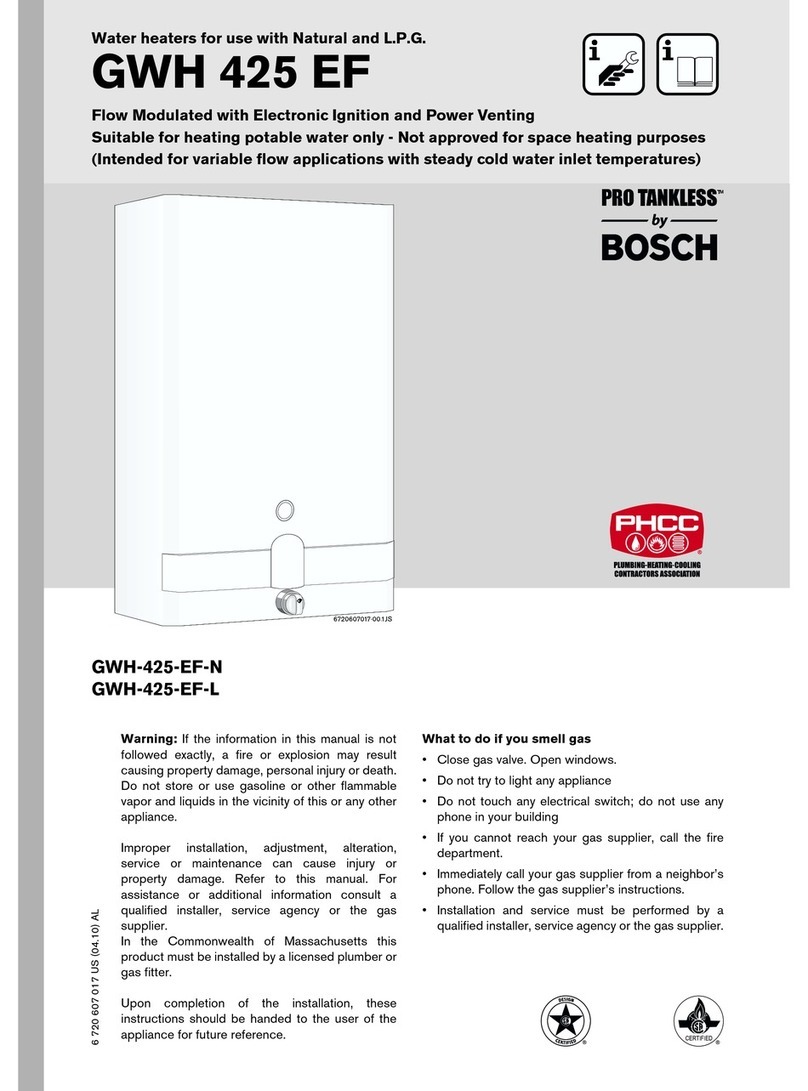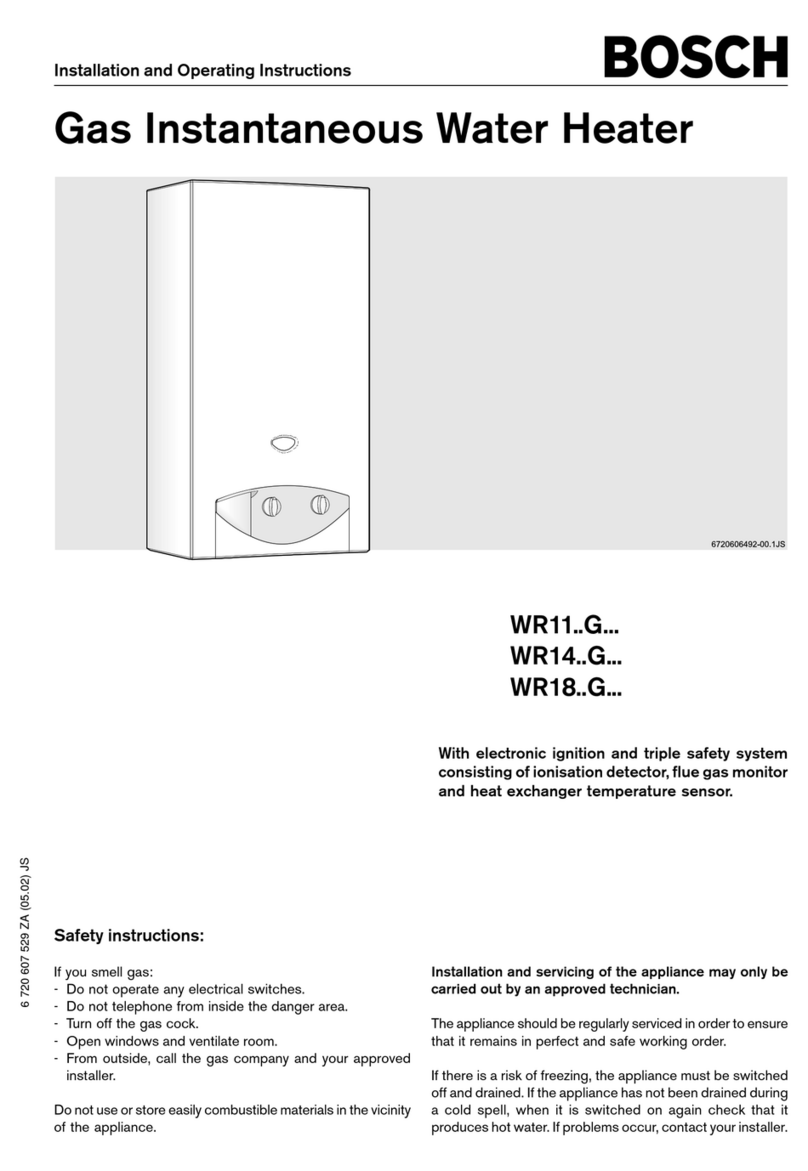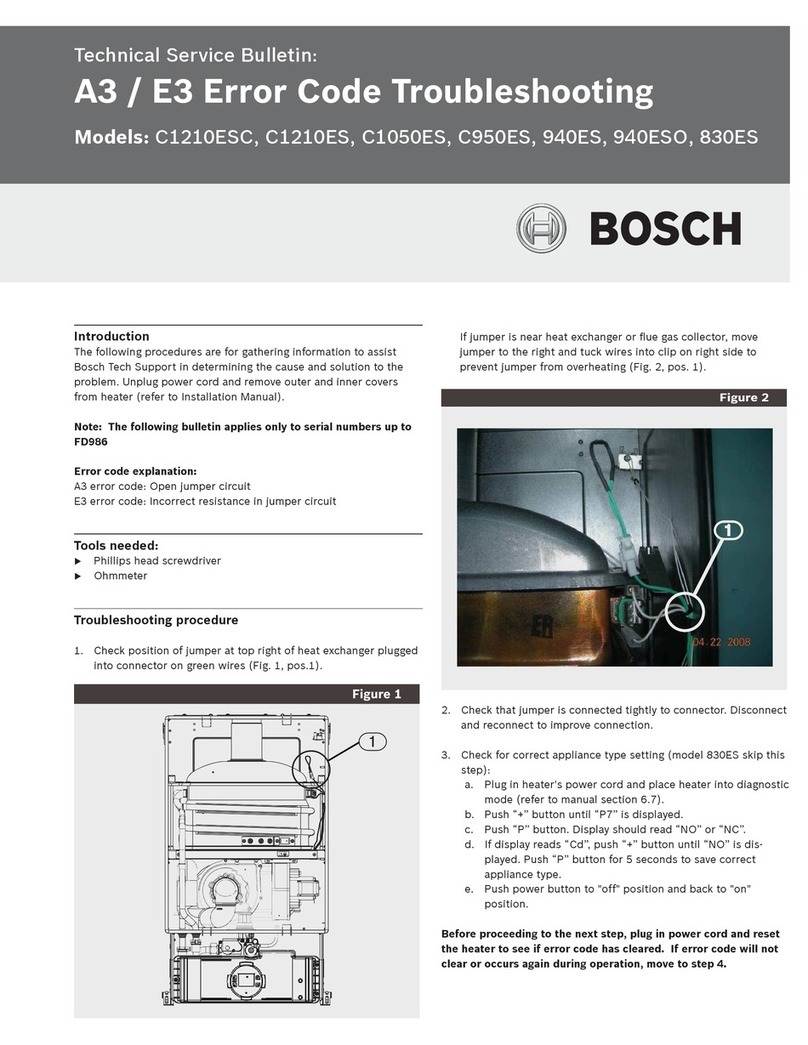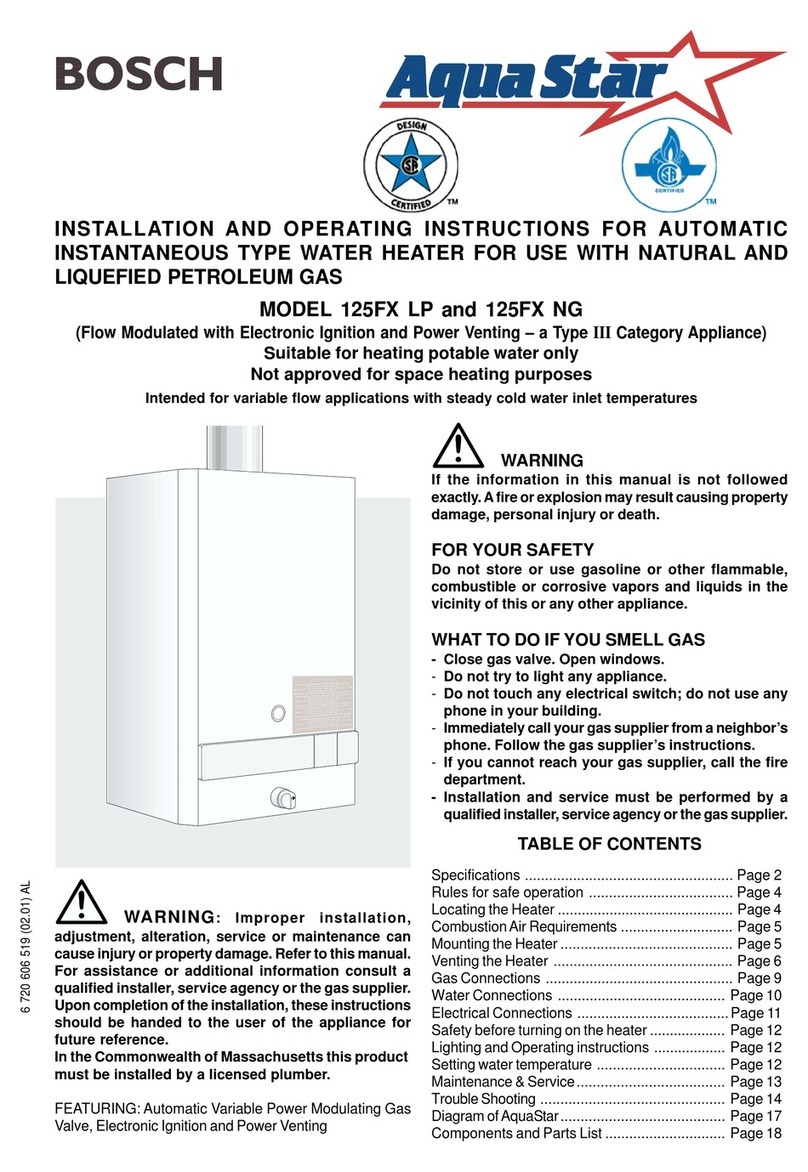
6 720 607 072 (16 January)
Appliance details
7
2.4 General rules to follow for safe
operation
B1. You should follow these instructions when you
install your heater. In the United States: The
installation must conform with local codes or, in the
absence of local codes, the National Fuel Gas Code
ANSI Z223.1/NFPA 54.
In Canada: The Installation should conform with
CGA B149.(1,2) INSTALLATION CODES and /or
local installation codes.
B2. Carefully lan where you install the heater. Correct
combustion air su ly and vent i e installation are
very imortant. If not installed correctly, fatal
accidents can be caused by lack of air, carbon
monoxide oisoning or fire.
B3. When the unit is installed indoors and ROOM
SEALED (twin i e) it is ermitted to be located in
bathrooms, bedrooms and occu ied rooms that are
normally ke t closed. See cha ter 2.9. If the unit will
be installed indoors and use indoor combustion air,
the lace where you install the heater must have
enough ventilation. The National Fire Codes do
not allow UNSEALED gas fired water heater
installations in bathrooms, bedrooms or any
occupied rooms normally kept closed. See
cha ter 2.5 and 2.8.
B4. You must vent your heater. See section on
VENTING.
B5. The a liance must be isolated from the gas
su ly i ing system by closing its individual manual
gas shutoff valve (not su lied with heater) during
any ressure testing at ressures in excess of ½ Psig
(3.5 kPa).
The a liance and its gas connection must be leak
tested before lacing the a liance in o eration.
B6. Kee water heater area clear and free from
combustibles and flammable liquids. Do not locate
the heater over any material which might burn.
B7. Correct gas pressure is critical for the o timum
o eration of this heater. Gas i ing must be sized to
rovide the required ressure at the maximum out ut
of the heater, while all the other gas a liances are in
o eration. Check with your local gas su lier, and
see the section on connecting the gas su ly.
B8. Should overheating occur or the gas su ly fail to
shut off, turn off the gas su ly at the manual gas
shut off valve, on the gas line. Note: manual gas
shutoff valve is not su lied with the heater.
B9. Do not use this a liance if any art has been
underwater. Immediately call a qualified service
technician to ins ect the a liance and to re lace
any art of the control system and any gas control
which has been underwater
2.5 Proper location for installing your
heater
Carefully select the location of the water heater. For
your safety and for ro er heater o eration, you must
rovide combustion air to the heater and a ro er
exhaust vent system.
Follow the guidelines below:
B1. Locate the heater where venting, gas and
lumbing connections are feasible and convenient.
B2. It is strongly recommended that the heater be
installed as a ROOM SEALED heater (twin i e). If
the heater will be installed as an UNSEALED heater
(single i e) than National building codes require
that you do not install this a liance in bathrooms,
bedrooms or any occu ied rooms normally ke t
closed. Heaters that are UNSEALED require a
considerable amount of combustion air, see
cha ter 2.8. If installing the heater UNSEALED
within a laundry room, be certain that the dryer is
ro erly vented. Failure to ro erly vent a dryer could
result in a gradual accumulation of lint build u inside
the combustion chamber of the heater.
B3. The hot water lines should be ke t short to save
energy. Centrally locating the water heater is best. It
is always best to have hot water lines insulated.
Warning: The water in this water
heater is cold and always remains cold
exce t for the times that hot water is
being used DO NOT INSTALL IN AN
AREA WHERE IT COULD FREEZE.
Drain the heater entirely if freezing
tem eratures are antici ated in area
where heater is installed by
disconnecting both the inlet and outlet
connections at the bottom of heater.
To revent any freeze damage,
introduce short bursts of com ressed
air (20-40 si) through these
connections to remove the residual
water in the horizontal i es and water
valve.
Warning: Flammable materials,
gasoline, ressurized containers, or any
other items or articles that are otential
fire hazards must NOT be laced on or
adjacent to the heater. The a liance
area must be ke t free of all
combustible materials, gasoline and
other flammable va ors and liquids.




















